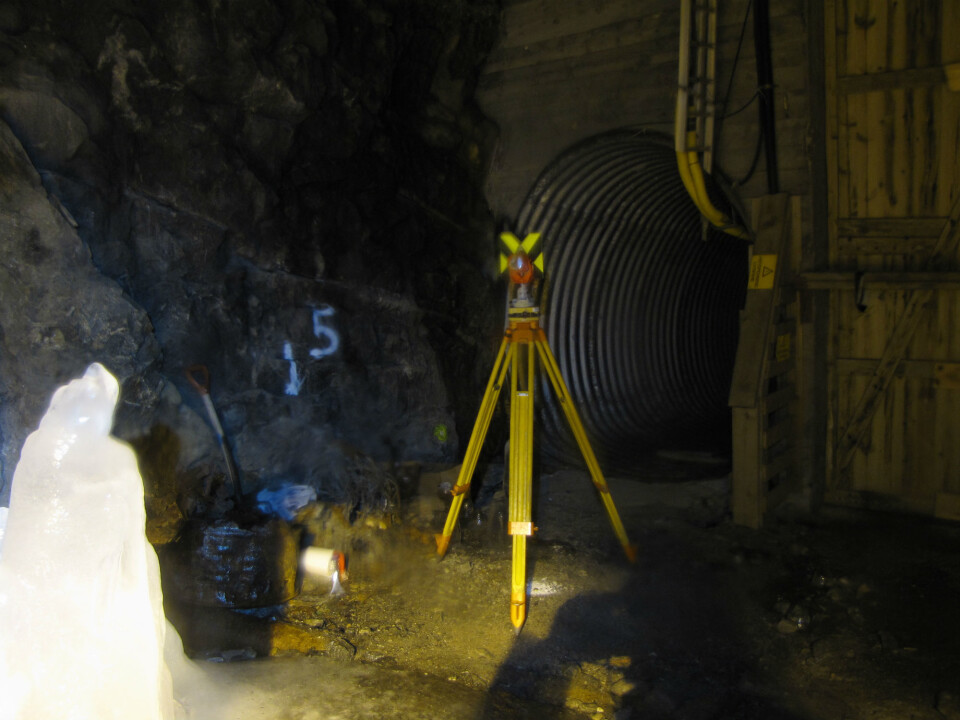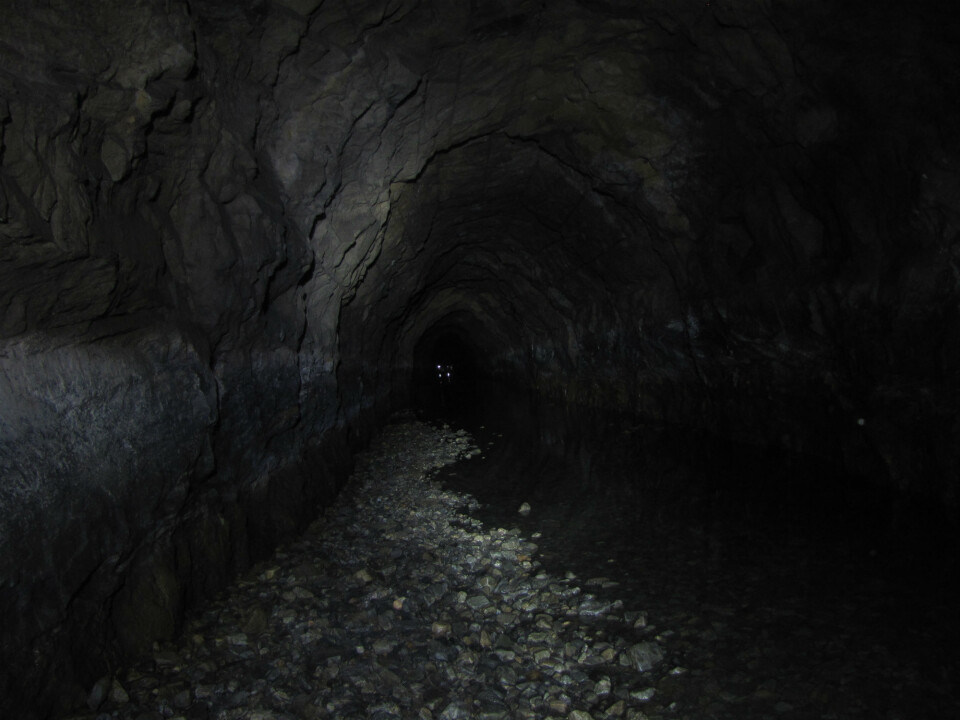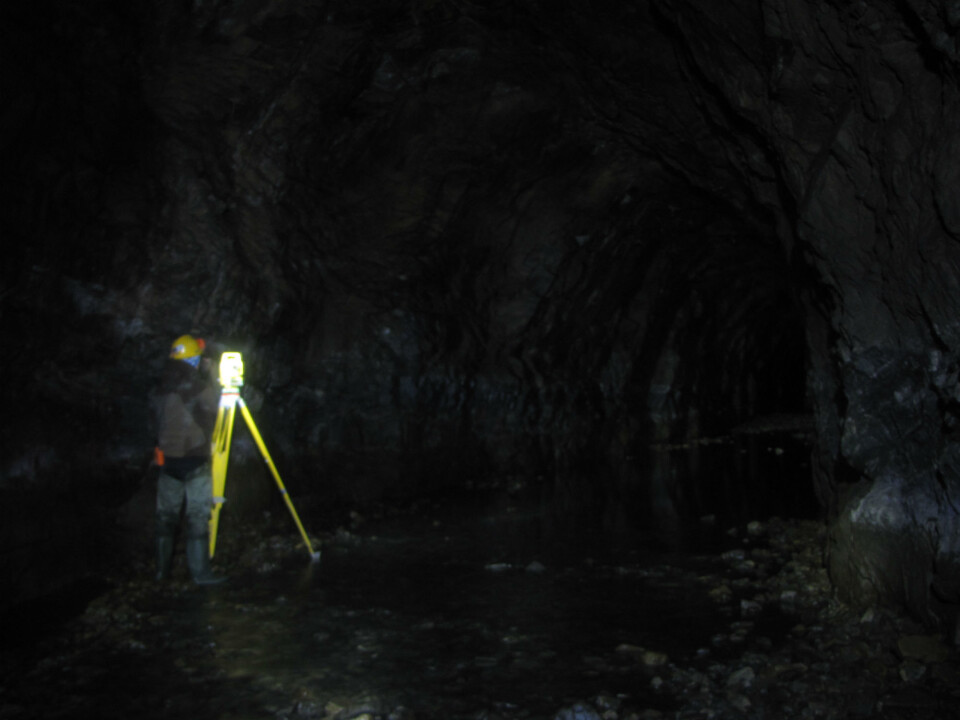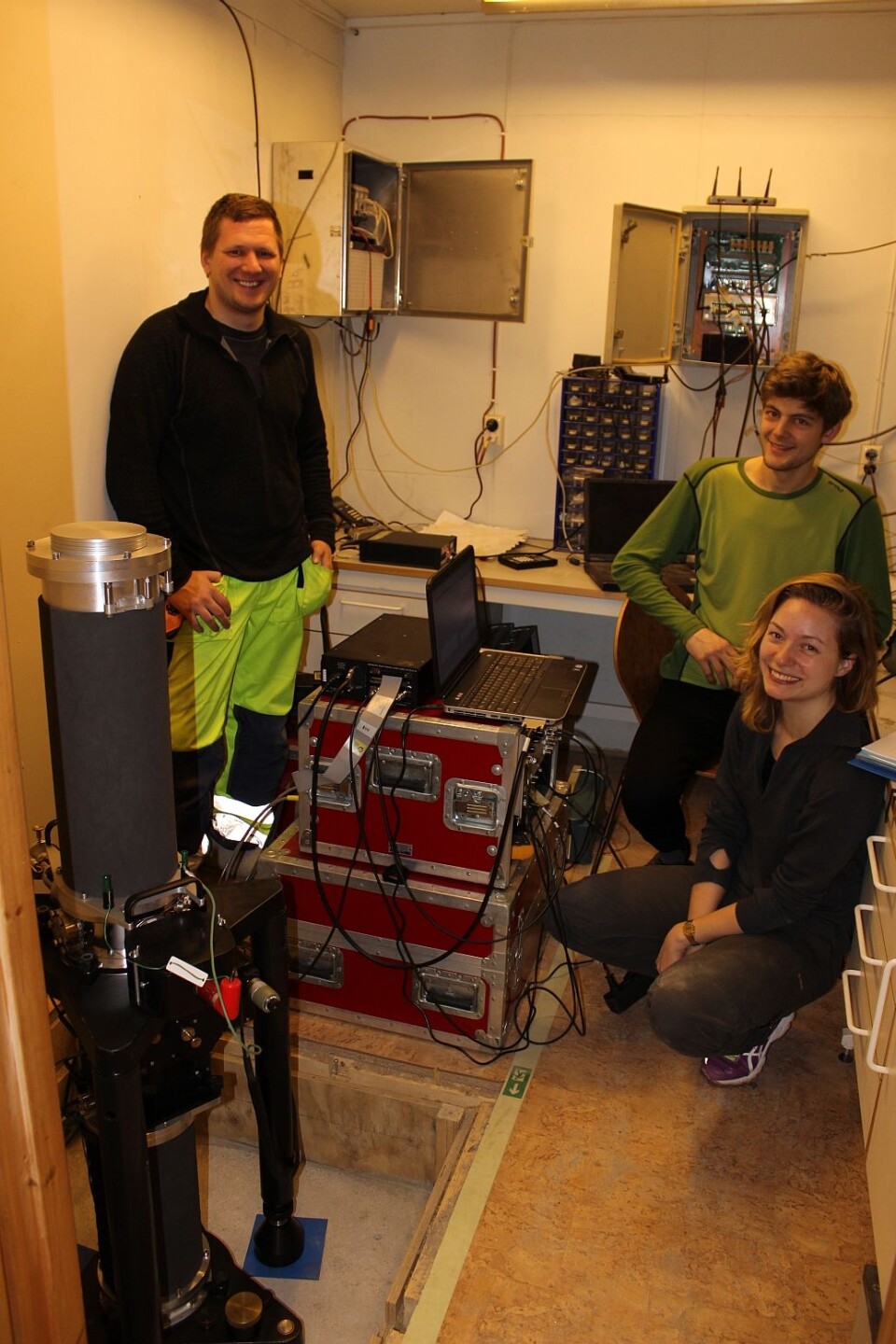The Gravity Expedition - Part II
Denne artikkelen er over ti år gammel og kan inneholde utdatert informasjon.
By Christian Gerlach
We have finally finished the subglacial work! Indeed, we were able to perform the first ever absolute gravity value measured underneath a glacier!

But, as expected when we wrote Part I of this contribution, hard work and long working days continued throughout the stay.
The original plan was to keep to (almost) normal working hours, i.e. finish work every day at the latest between 6 and 7 pm and start by 8 am. We managed the latter during most days - not so the first. As the days went, dinner was delayed from 8pm to 10pm, then 11 pm (or even later). The reward is a list with co-ordinates of several gravity stations along the tunnel as well as absolute and relative gravity observations, all acquired within 4 days: The first epoch of our desired time series for studies of gravimetric mass balance!

The tunnel is about 1.5 km long from the entrance to the laboratory area.
There we sit 200m beneath the surface of Engabreen glacier. This part of the tunnel is dry and equipped with electric lighting, i.e. lamps on the sidewalls - spaced every 40 metres. Behind the lab, however, the tunnel continues for another 2km as a completely dark “water-tunnel” underneath Engabreen with the option to exit on the opposite side of the glacier tongue. At this time of the year, this part of the tunnel is not more than a little creek, about 5-6 meters in width, with big stones on the river bed and water between 5 to 50 cm deep, but also with some dry “beaches” (there are some wonderful sand beaches actually - we just missed the sun and some palm trees) on which it was possible to put the relative gravimeters and set markers into the sidewalls. In summer the tunnel is full of water and passage along it is impossible.
The most difficult part of the water tunnel comes right at the beginning: a block of ice is growing into the tunnel and almost blocks the whole way.
There is just a small space at the lower right hand side which allowed us to crawl underneath the ice with the equippment; and a larger opening on the upper left. We climbed up there to put a tripod on top of the ice block for continuing the traverse for the co-ordinate survey from there.

But was that actually the most difficult part? Right after the ice block we found ourselves in the deepest river section with water well above our hips. Luckily, this stretch lasted only about 100m. It's a nice experience to take the lead, wading as the first one in deep water into complete darkness. It was Siri's privilege to take this job. Since there were not enough sufficiently long waders, Alex and Vegard had to share one pair through this deep section, with Miriam providing the service to deliver the waders to Alex who had to wait near the ice block as Vegard crossed the deep section until reaching the first beach. One the way back, I made my personal evaluation of glacier water temperature as I found my newly acquired waders were not perfectly waterproof. It is indeed cold!

However, it was not cold enough to wash away the satisfaction of having finalised the surveying traverse all the way to the tunnel exit and having placed a GPS receiver there to close the traverse with an absolute co-ordinate control. We left the GPS receiver at the exit during the night. Siri brought it back the next day when we waded through the water tunnel for the second time to do the gravity survey at the beaches. In the meantime, Vegard and Alex had the questionable pleasure of performing the leveling survey from the entrance all the way to the absolute gravity station. A difficult task in a gloomy tunnel.

Did I mention that days were long? In contrast, the last day was surprisingly short. We expected to be flown out with the helicopter during early afternoon, so at around 10am Miriam went to the tunnel entrance to contact the pilot by mobile phone to arrange the final details, as the tunnel telephone system (and our main contact with the outside world) was not working. At that time the absolute gravimeter was
still to complete the last measurement session and all equipment was to be packed and transported to the entrance. Miriam's message speeded up the work: “the weather will deteriorate significantly this afternoon - so it's now or never if we want to get out by today - the helicopter will be here in less than two hours!” I don't know how, but Alex, Vegard and Siri with Miriam's help managed to finalise the FG5 session, demount the instrument, pack the boxes (350kg!), finalise the levelling connection from the closest benchmark to the FG5 marker (which was not accessible during FG5 observations) and deliver the boxes to the entrance (1.5 km walk) during this one hour. I went up the the lab to get the last box, while they loaded the helicopter. I got out then with the last trip together with Miriam. Another amazing trip flying down the glacier along the fjord - luckily still in good weather conditions. Miriam, Alex and Vegard then continued by car to Bodø airport, catching the last three seats on the evening flight to Oslo, while Siri joined me for a two day car drive transporting all the equipment back to Ås by road.
No doubt, it was an exhausting but amazing experience for the whole team with a great variety of impressions from sunny weather with blue sky and brilliant fjord views, to guarding tripods during snow storms and wading through darkness in water up to the hips. Special thanks go to Miriam for her assistance and for making this campaign possible. And the best thing about starting a time series: you need to come back!







